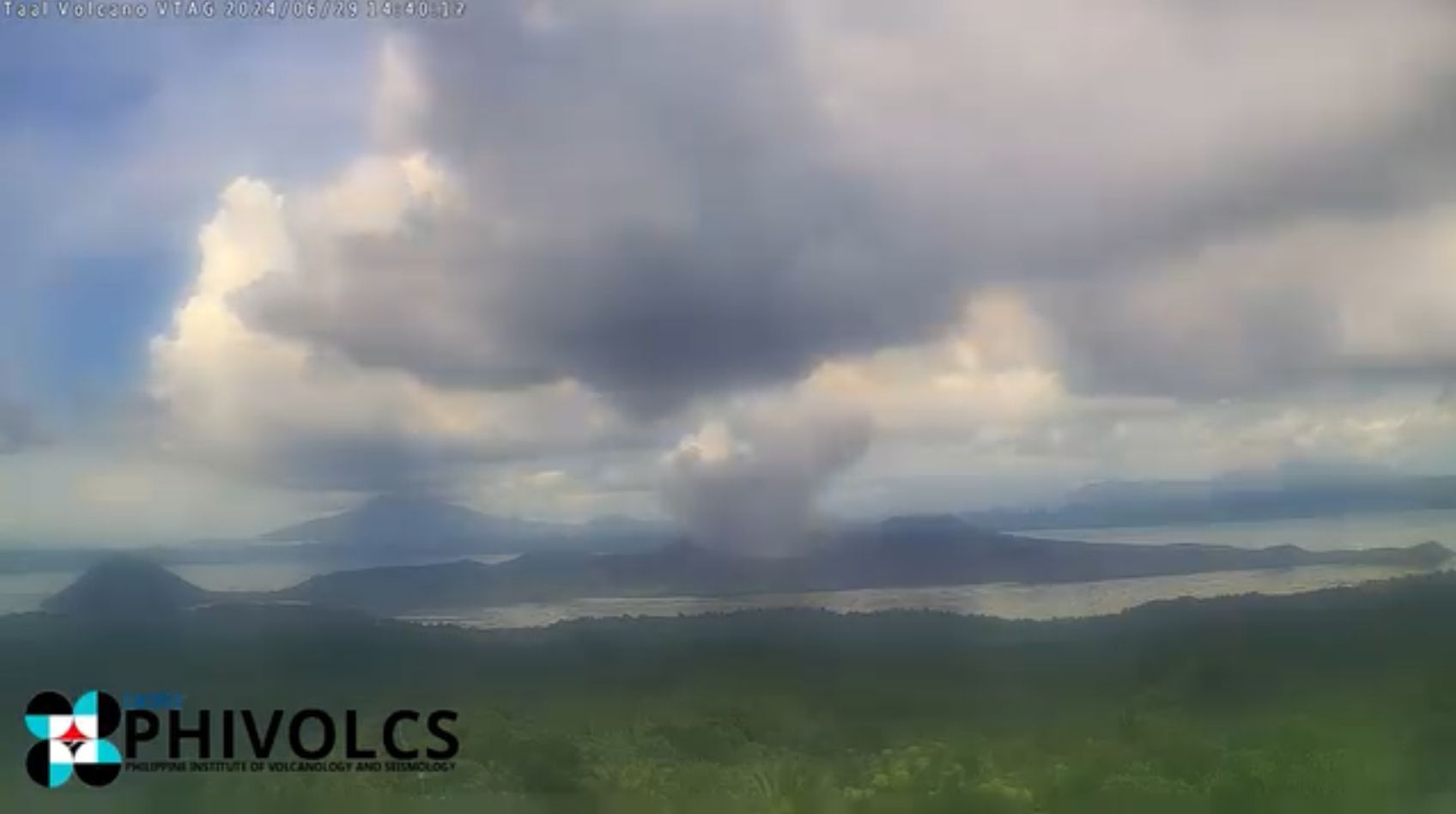
A volcanic tremor that lasted 310 minutes, or five hours and 10 minutes, was recorded at Taal Volcano in the past 24 hours, based on the monitoring of the Philippine Institute of Volcanology and Seismology (Phivolcs) released on Sunday, June 30.
Phivolcs said the volcanic tremor is part of the latest phreatic activity at Taal, where two “weak” steam-driven events occurred at 2:31 p.m. and 2:39 p.m. on Saturday, June 29.
“[The] weak phreatic activity is likely driven by the continued emission of hot volcanic gases at the Taal Main Crater and could be succeeded by similar events,” it pointed out.
The event produced steam-laden plumes reaching 900 meters in height.
Phivolcs noted that Taal’s sulfur dioxide (SO2) emissions averaged 6,571 tons when last measured on June 28.
“Its average SO2 emissions since January this year remain high at 7,895 tons per day,” it said.
However, Phivolcs said the background levels of volcanic earthquake activity and ground deformation detected at Taal indicate that unrest is unlikely to progress into a magmatic eruption.
Taal Volcano remains under Alert Level 1, which means it is still in an abnormal state and should not be interpreted as having ceased unrest or the threat of eruptive activity.
Phivolcs added that sudden steam-driven or phreatic explosions, volcanic earthquakes, minor ashfall, and potentially lethal accumulations or expulsions of volcanic gas can occur and threaten areas within the Taal Volcano Island (TVI).
It also warned the public that the degassing of high concentrations of volcanic SO2 may pose long-term health risks to communities around Taal Caldera, which are frequently exposed to volcanic gas.
Phivolcs reminded the public that entry into TVI, which is a permanent danger zone, particularly near the main crater and the Daang Kastila fissure, is strictly prohibited due to ongoing hazards.